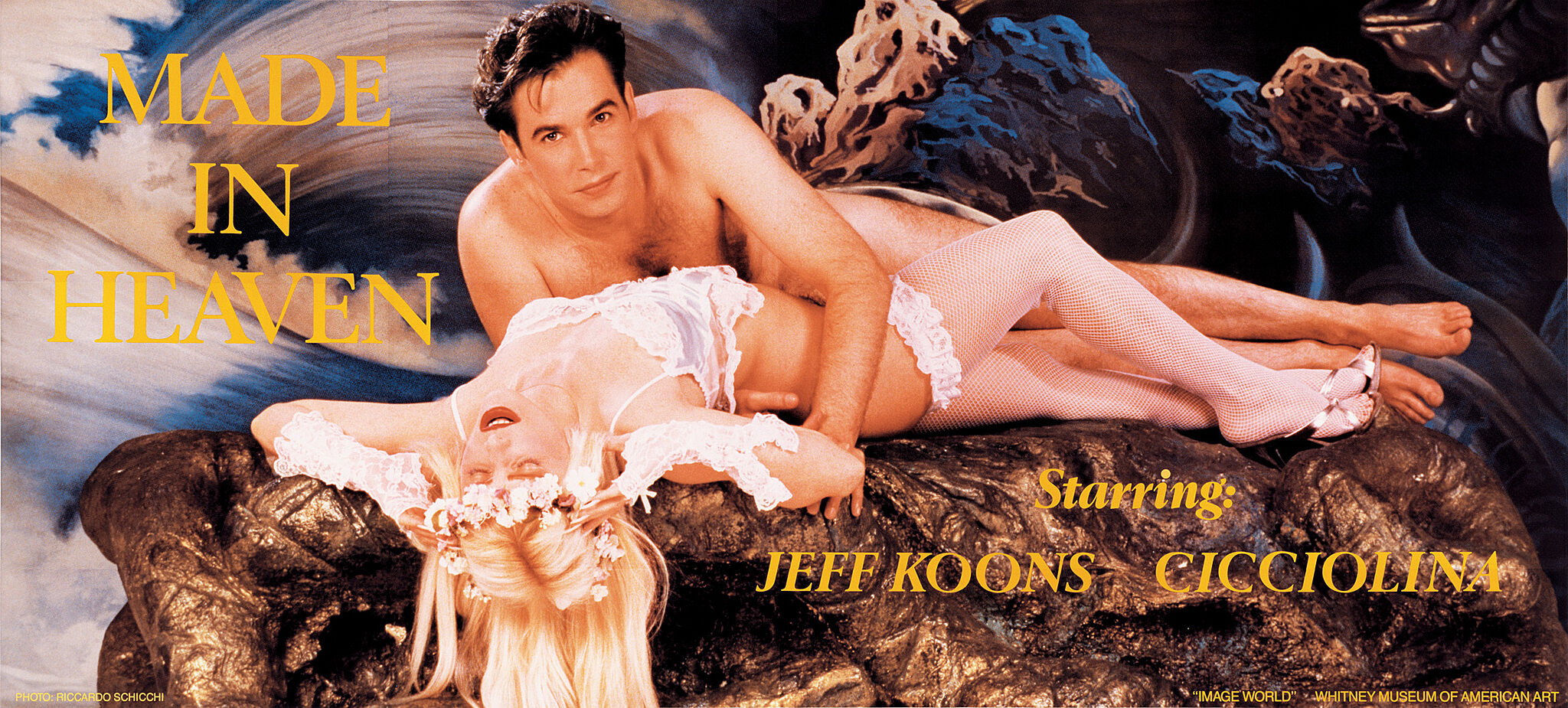Jeff Koons: A Retrospective | Art & Artists
June 27–Oct 19, 2014
Jeff Koons: A Retrospective | Art & Artists
Made in Heaven
7
If with Banality Koons proposed to liberate his audience from the stigma of bad taste, with Made in Heaven he promised nothing less than emancipation from the shame of sex. The billboard from 1989 announced a feature film that Koons planned to realize with the world-famous porn star Ilona Staller (also known as La Cicciolina), whom he hired to pose with him on her sets. Although Koons ultimately decided not to make the film, he fell in love with his costar and produced a body of increasingly explicit work in which the pair played a contemporary Adam and Eve surrounded by symbols of fidelity and affection, such as dogs and flowers. Koons’s work and public relationship caused a media sensation, which climaxed with the couple’s marriage and the opening of Made in Heaven in New York. To this day, the work stands not as pornography but an extremely risky and vulnerable form of self-portraiture as well as an enduring experiment in fame.
Made in Heaven, 1989
In 1989 the Whitney invited Koons to create a billboard for Image World, an exhibition exploring the relationship between art and the media. By this time, Koons had become one of the most famous young artists in the world, but he still felt art had a limited reach compared to the entertainment industry and imagined that making a film, titled Made in Heaven, would further increase his renown. For his costar, Koons sought out Ilona Staller (also known as La Cicciolina), a celebrity porn star who also held a seat in the Italian parliament. Koons traveled to Italy and contracted Staller to pose with him on her own sets and be shot by her manager and frequent photographer Riccardo Schicchi. Installed on the streets of lower Manhattan, the billboard represented a particularly brazen, perhaps parodic, form of self-promotion, and launched one of Koons’s most important bodies of work.

